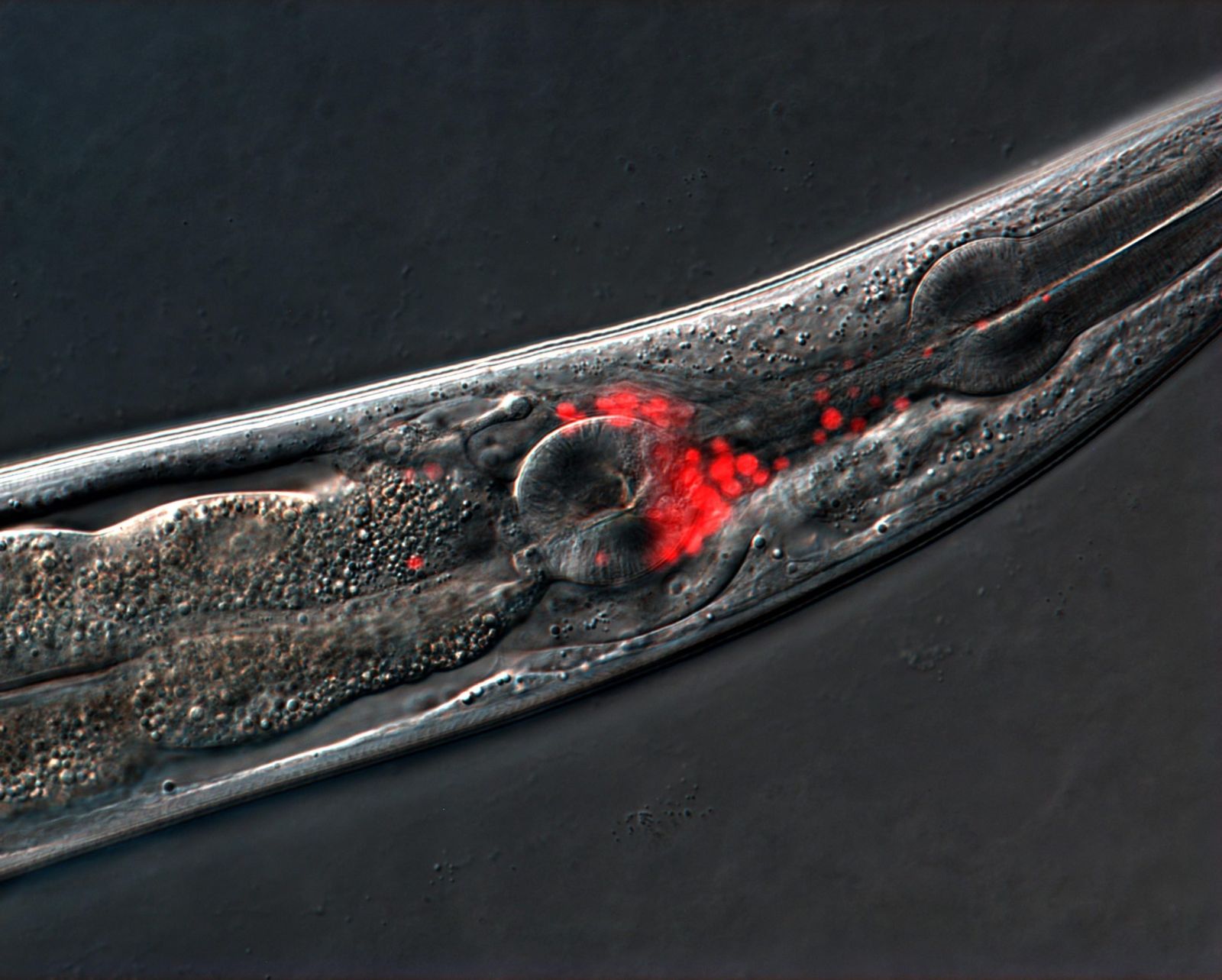Is neuronal hyperactivity the key to brain aging? 🧠
Published by Adrien,
Source: Proceedings of the National Academy of Sciences
Other Languages: FR, DE, ES, PT
Source: Proceedings of the National Academy of Sciences
Other Languages: FR, DE, ES, PT
Follow us on Google News (click on ☆)

C. elegans nematodes.
Image Queensland Brain Institute
Researchers at Nagoya University have discovered that the hyperactivation of certain neurons plays a key role in brain aging. This discovery, published in the Proceedings of the National Academy of Sciences, opens new perspectives for slowing cognitive decline.
The study relied on the nematode Caenorhabditis elegans, a model organism sharing biological mechanisms with humans. The researchers observed that some neurons become hyperactive with age, thereby disrupting brain functions.
By manipulating the diet of the nematodes, the scientists managed to reduce this neuronal hyperactivity. This approach suggests that dietary modifications could preserve cognitive functions in humans.
The results show that the hyperactivation of AWC and AIA neurons is particularly problematic. These neurons, essential for associative learning, become dysfunctional with age, affecting memory-related behaviors.
This research challenges the idea that cognitive decline is solely due to a decrease in neuronal activity. It highlights the importance of regulating hyperactivity to maintain healthy brain function.

Head of a C. elegans nematode with red fluorescence of neurons.
Credit: Kentaro Noma
The researchers now plan to explore strategies to modulate neuronal activity. These works could pave the way for preventive interventions against brain aging.
Finally, this study underscores the importance of research on model organisms like C. elegans. These small worms offer valuable insights into biological mechanisms applicable to humans.
What is neuronal hyperactivity?
Neuronal hyperactivity occurs when certain neurons become excessively active, disrupting normal communication between brain cells. This phenomenon can lead to cognitive dysfunctions.
In elderly individuals, this hyperactivity is often linked to changes in neural networks. These modifications can impair memory, learning, and other essential brain functions.
Recent studies suggest that neuronal hyperactivity could be a compensatory response to neuron loss. However, this compensation eventually becomes harmful, leading to accelerated cognitive decline.
Understanding this mechanism is crucial for developing targeted therapies. By regulating neuronal activity, it might be possible to preserve brain functions despite aging.
Why use C. elegans to study the brain?
Caenorhabditis elegans is a widely used model organism in biology. With only 302 neurons, its nervous system is simple yet functional, allowing precise studies on neuronal mechanisms.
This nematode shares many genes and biological pathways with humans. This makes it a valuable tool for studying processes like brain aging.
Moreover, its short lifespan allows for rapid observation of aging effects. Researchers can thus test interventions and measure their impacts within a few weeks.
Finally, the transparency of C. elegans facilitates the observation of neurons in action. This characteristic is essential for understanding how neuronal activity changes with age.